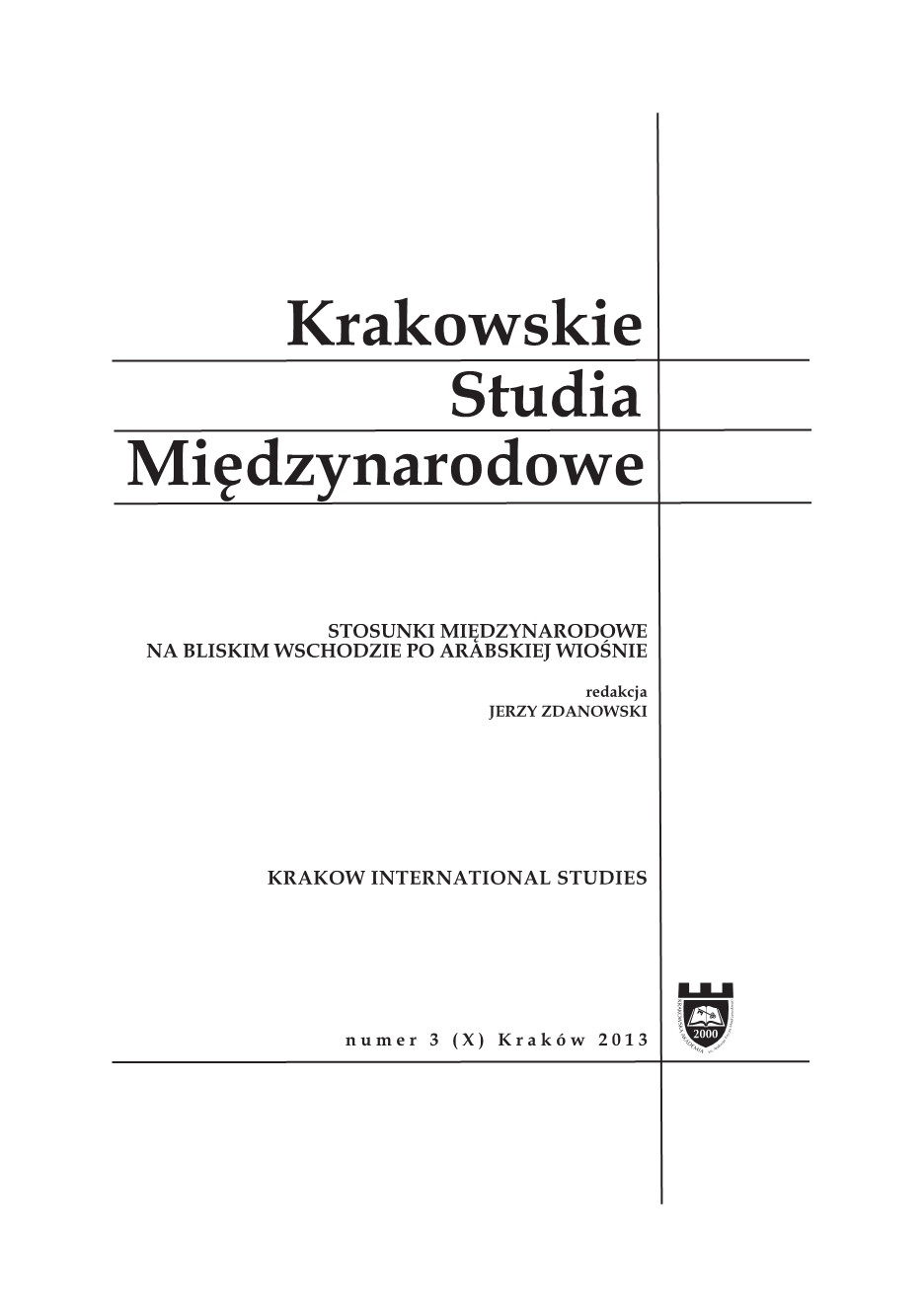
We kindly inform you that, as long as the subject affiliation of our 300.000+ articles is in progress, you might get unsufficient or no results on your third level or second level search. In this case, please broaden your search criteria.

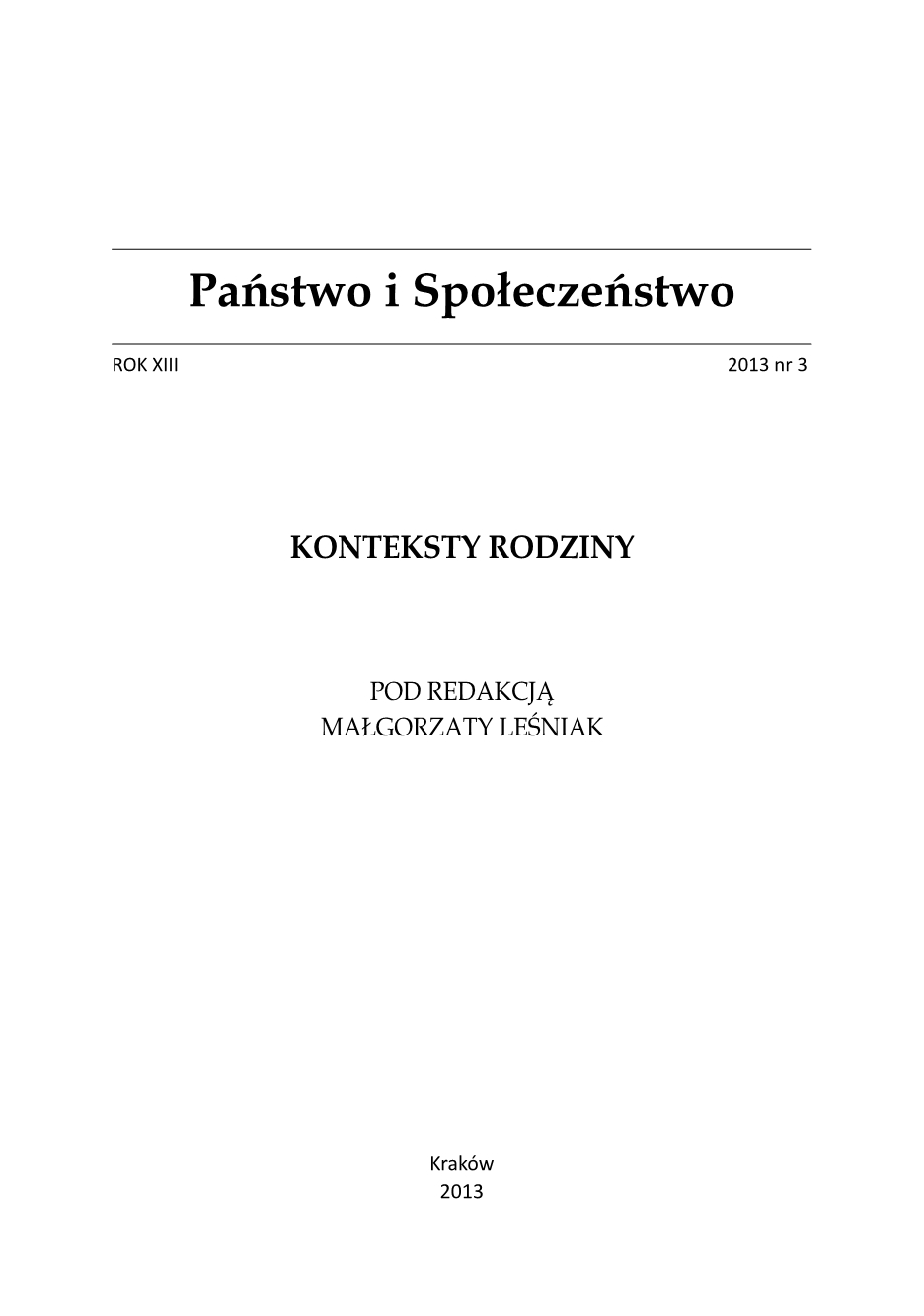
This article portrays the Egyptian family known from Palace Walk and influenced by modernization, which affected the traditional understanding of the gender roles. To use gender roles as a basis for any discourse on the relationship between modern and traditional family environments, in an Arabic culture, seems to be an interesting proposal. The transformation of the contemporary Egyptian family, determination of the types of characters, and relations between the sexes characteristic of the Arab cultural sphere is presented based on the author’s analysis. The article reveals the condition of an Egyptian family and the shift in its functioning, related to the conflict between the traditional and modern, in Muslim discourse and social life. The dissonance in the female and male presence in private and public spaces, as well as their ability to achieve professional fulfillment is its significant point.
More...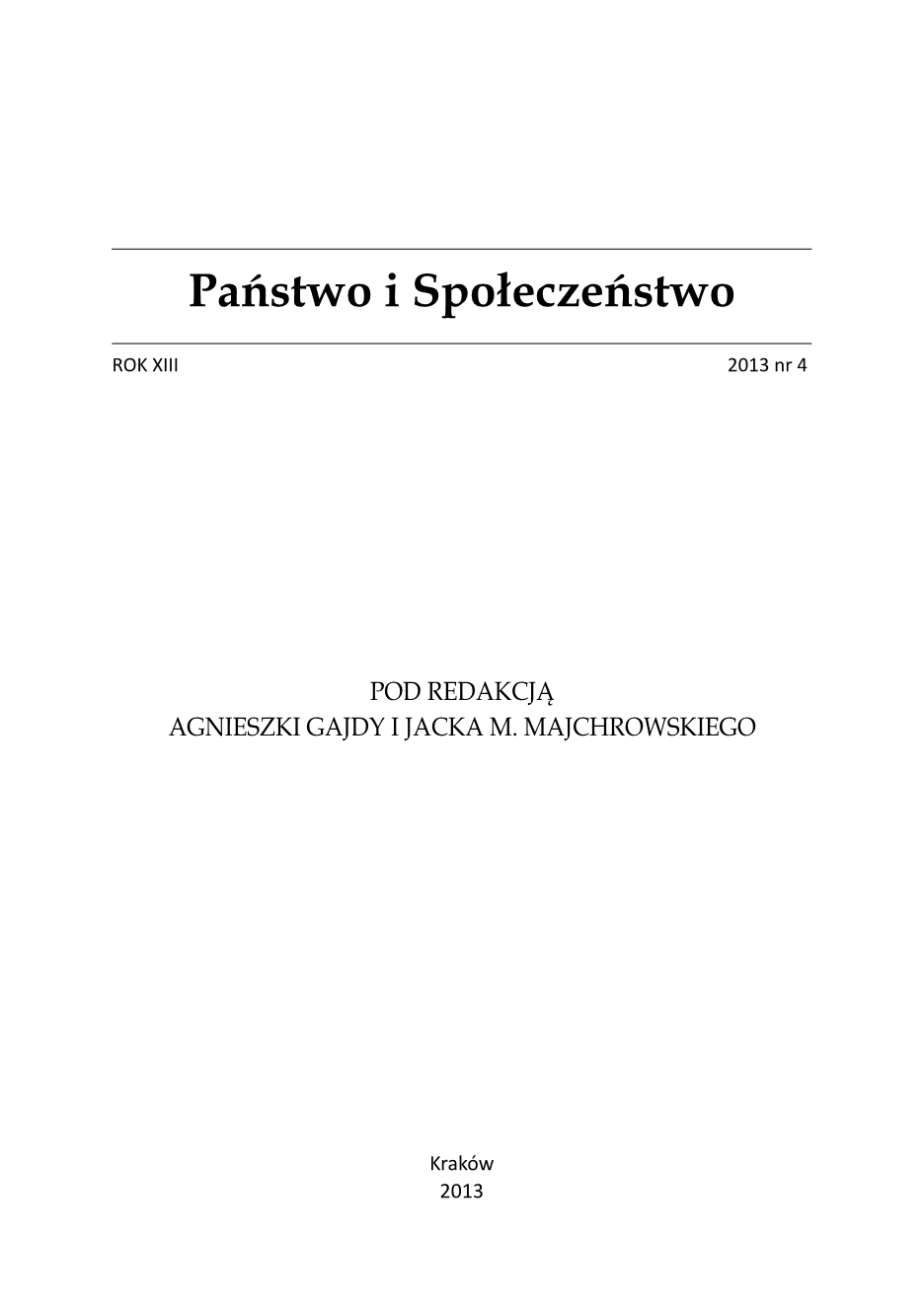
The article presents the little-known problem of contemporary Algeria – Protestant proselytism and its political repercussions. In Algeria, Islam state religion, part of the ideology and politics. Neoprotestancki raises hostility proselytism Muslims because breaks the unity of the country and fueling religious animosities. Authorities believe that Protestants are being used by the United States to the expansion in this region of the world. Protestant movement is a catalyst for ailments of the Algerian state and the aspirations of the public.
More...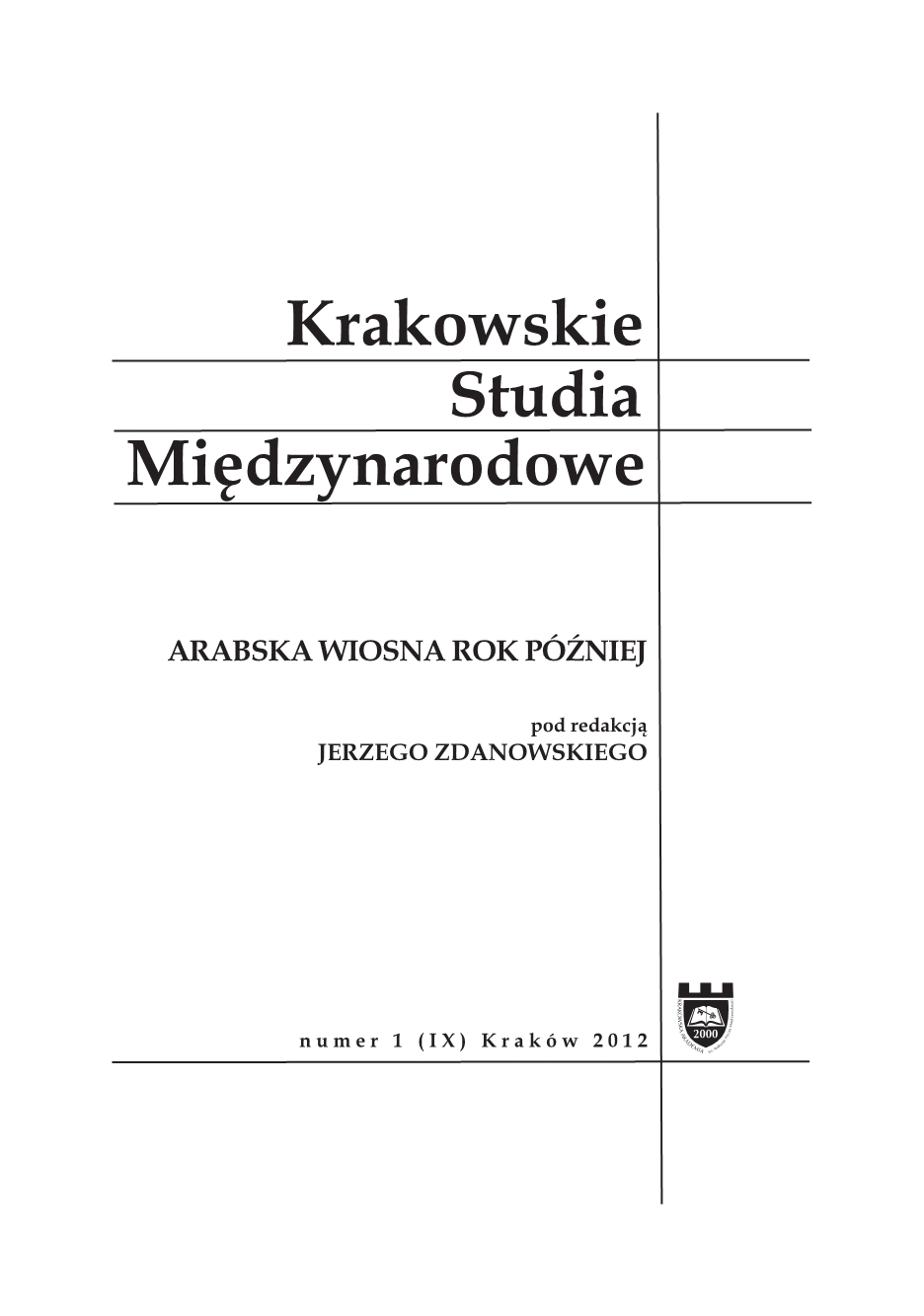
In this article I have characterized the first year of the political transformation in Egypt. The character of this process causes a lot of controversies and objections within the Egyptian society and main political groups, what – in effect – induces the situation of permanent political crisis. First of all, I have presented a very beginnings of this process, and then depicted the main political events. After that, I have marked the main political groups and characterized them aims. I have also depicted the framework of temporary political system, analyzed the parliamentary elections, characterized the problems with the presidential elections and with the drafting of a new constitution. The main thesis of this article is the assertion that the army (as main political actor) tend to exert influence on a new constitution – in order to maintain its corporatist interests and to be able to affect the Egyptian politics indirectly, what does not favour the democratization.
More...
The authoress analyses the consequences of the Arab Spring for security of the region countries. She concentrates on uncontrolled proliferation of weapons from Libyan stockpiles and the outbreak of Tuareg rebellion in the northern Mali. These developments were the results of the collapse of Gaddafi’s regime in Libya. That’s all – along with political turmoils in Tunisia and Egypt – results in the flow of refugees into the region. The changes in the political system in Tunisia and Libya have empowered the Salafist movements and facilitated the creation of new Islamic organizations. Meantime due to reducement of security measures in the states involved in political revolts the biggest terrorist organizations in the region – al-Qaeda in the Islamic Maghreb – has exploited the destabilization by increasing its military capabilities.
More...
The Middle East has permanently occupied a key place in the foreign and security policy of the United States. The US strategy for the Middle East is determined by economic and security considerations as well as the need to maintain stability in the area. Accordingly, it has been closely interconnected with the US efforts to resolve the Israeli-Palestinian conflict. The White House has combined the implementation of its Middle-Eastern strategy with turning Arab countries into firm and stable American allies (clients). One of the elements of the American policy is to keep the status quo in terms of territorial borders in the region. Political conflicts and crises in the Middle East are viewed as disturbing the energy sector, which runs against the American interests. The Arab Spring has triggered inevitable socio-political changes in the Arab world, influencing thereby the US policy in the region. Until the Arab Spring broke out, Washington had supported several Arab regimes on condition that their policy should be pro-American and in line with the interests and goals of the US policy in the Middle East. Independently of the will of the White House, the Arab Spring has brought new accents into the American policy in the Middle East. The downfall of pro-American regimes and the growth in strength of fundamentalist factions which, through their political parties, used to win parliamentary elections in certain Arab countries, constitute a new challenge to the strategy of the White House towards the Middle East.
More...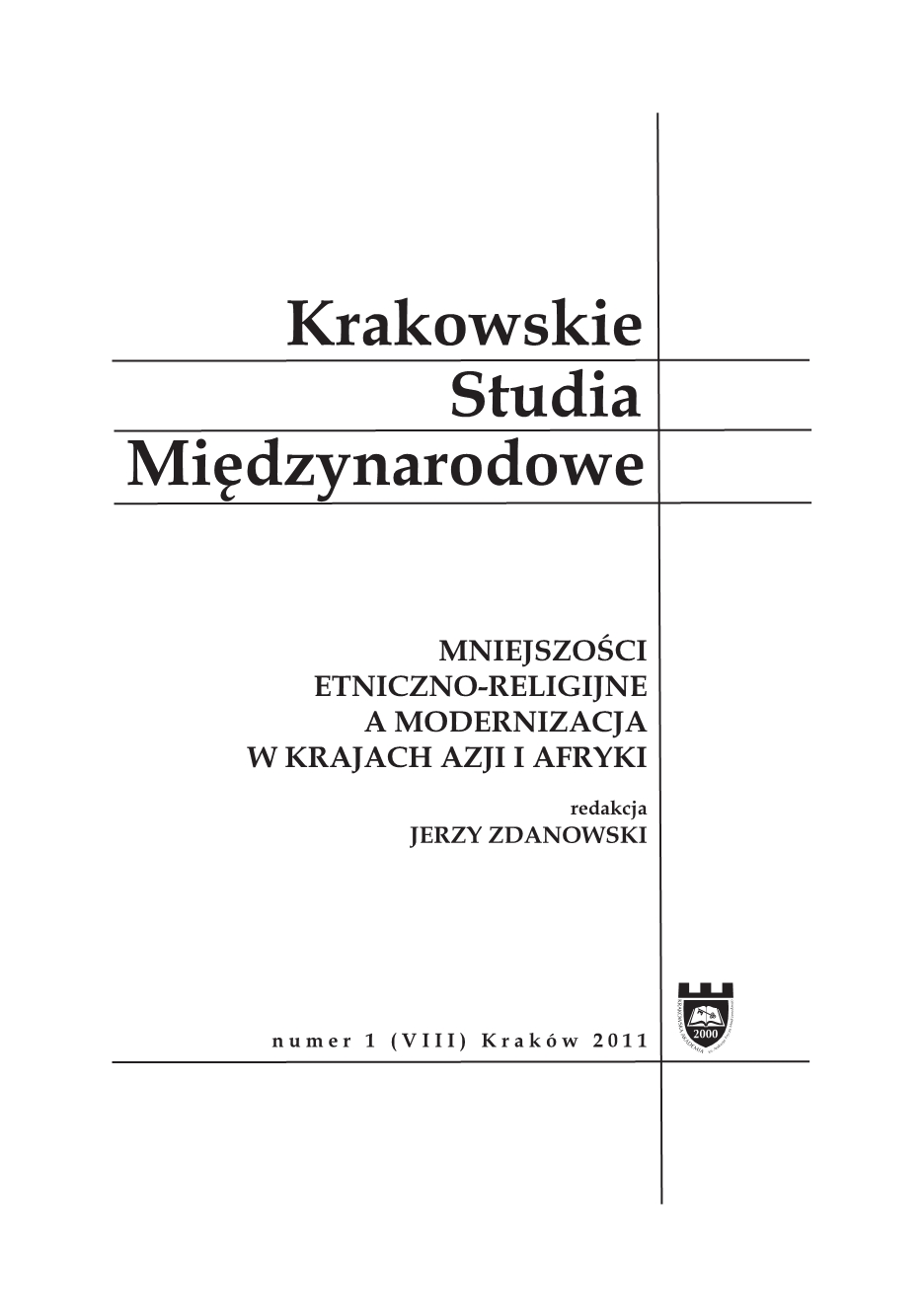
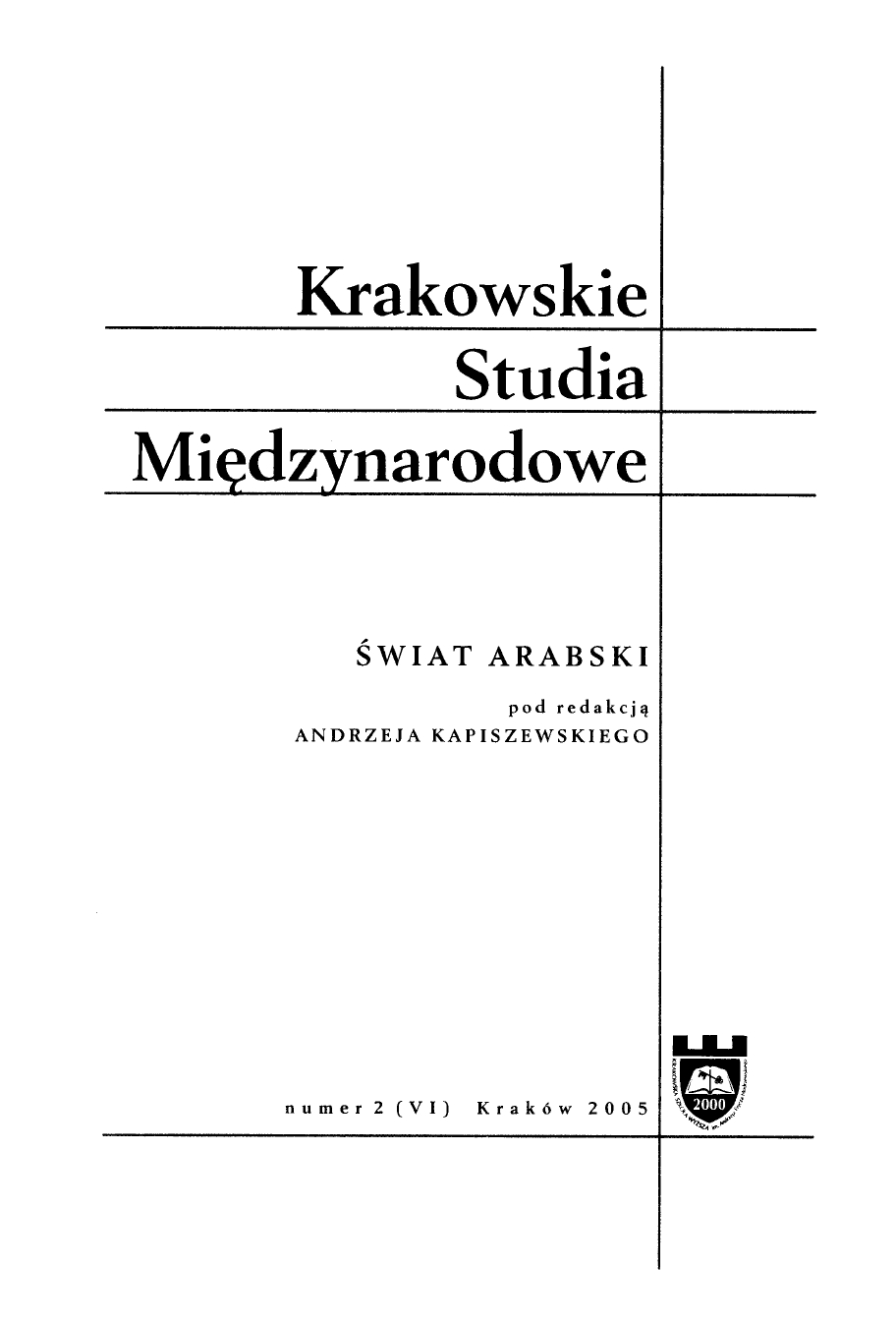
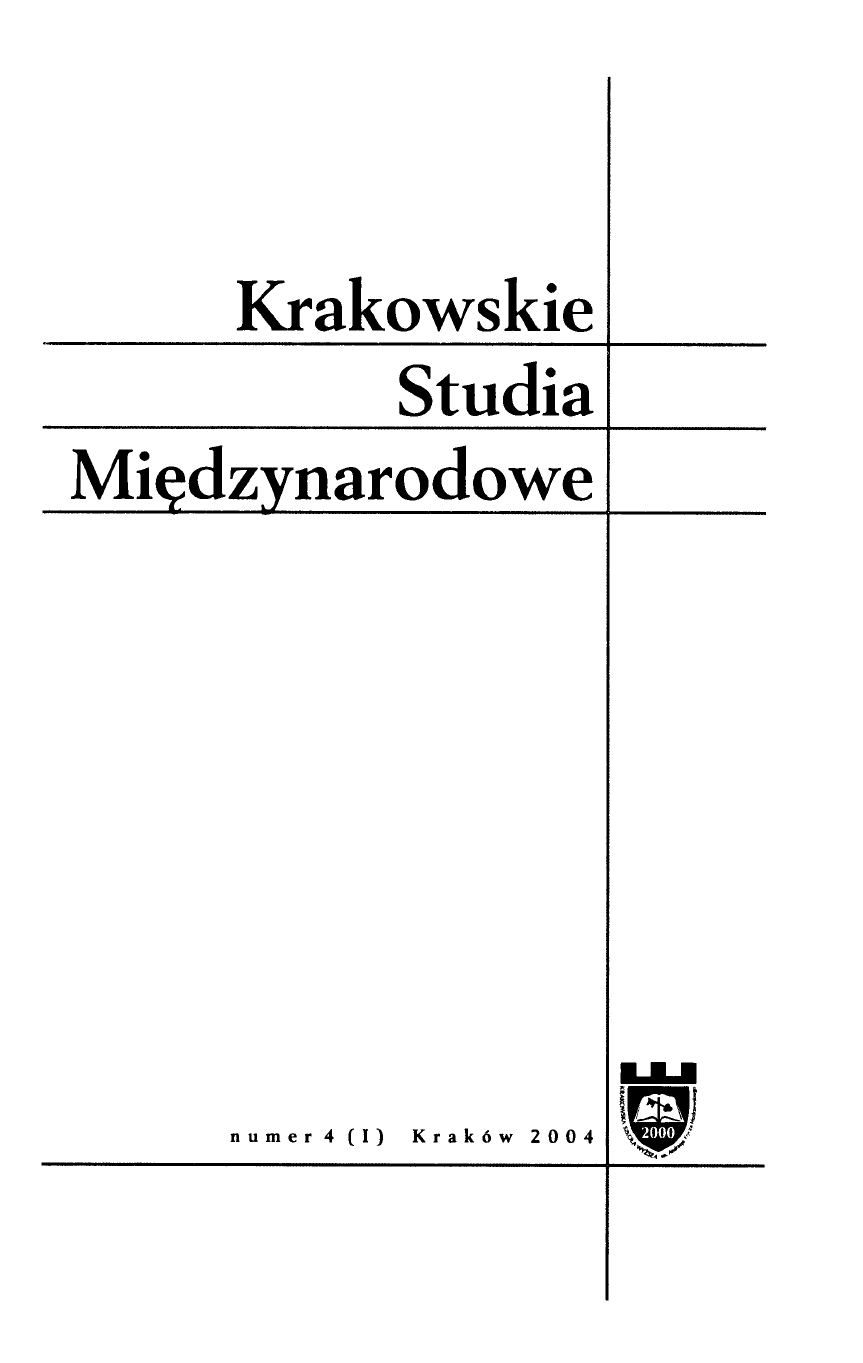
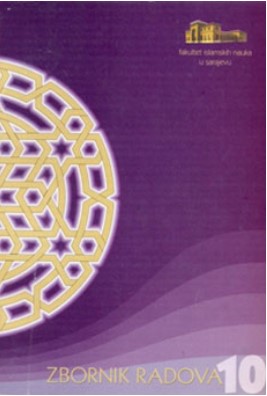
U prostorijama Rektorata Univerziteta u Sarajevu 29. septembra 2004. godine potpisan je Ugovor o uključivanju Fakulteta islamskih nauka u sastav Univerziteta u Sarajevu. Ovim činom FIN je postao prvi teološki fakultet u sastavu Univerziteta u Sarajevu, čime je uključen u akademski prostor evropskih i svjetskih univerziteta, a Univerzitet u Sarajevu je obogaćen posebnostima jednog ovakvog fakulteta.
More...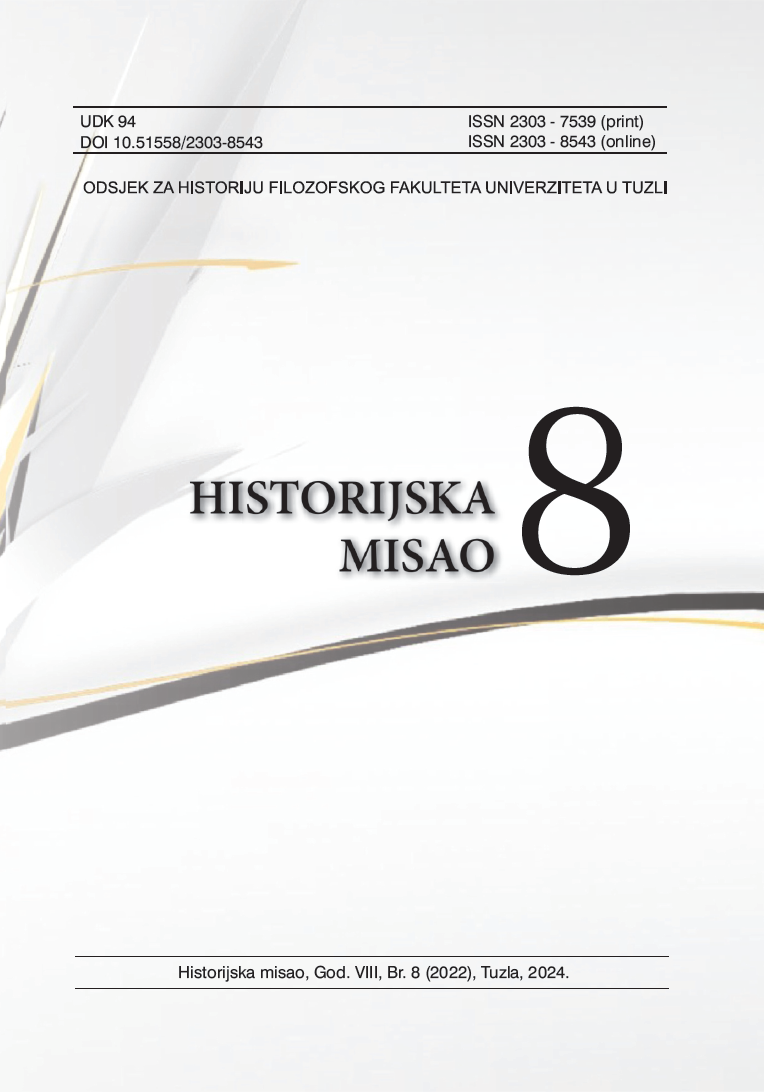
In this article, the author analyzes the place and role of prominent Bosnian Muslim religious authority Husein Ðozo in the 13th SS Division, the background and reasons for his joining this division, his views on current issues and challenges of the Second World War, as well as his fate after returning to Yugoslavia and being arrested in 1945. The author points out that Ðozo’s postwar involvement, in his fundamental ideas, does not represent a radical break with the tendencies and views he advocated in the thirties and forties, but rather a continuity of efforts to realize and reflect on the position and perspective of Islam and Muslims in the contemporary world
More...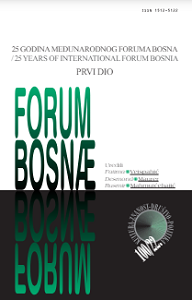
For a religious person, the perennial question remains: How is it that “religion” can so easily be co-opted by unscrupulous politicians to contribute to the shrill, self-righteous denigration of the other? How can a revelatory message be so easily reduced to “identity politics”? And of course, what are “religious leaders” doing about it? In fact, the phrase seems no more apt for them than for “political leaders,” as both fall prey to interests that so easily trivialize their stated mandate, God-given in both cases! So the drama in the “Holy Land” is but an ongoing version of what we have seen in so many other parts of the world: the Balkans, the African Great Lakes region, Central Asia, South Asia,, and other parts of West Asia. Several candidates compete to explain “what is really going on,” but they all come under the name of human venality, which faith communities have proven virtually powerless to temper over the centuries.
More...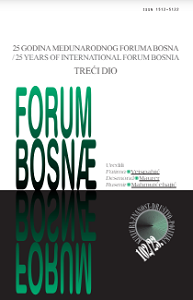
U prve godine 18. stoljeća po miladu, odnosno 12. stoljeća po hidžri, Sarajevo je ušlo kao teško postradali grad teritorijalno umanjenog bosanskog ejaleta, pogranične pokrajine Osmanskog Carstva u povlačenju. Treći austro-turski rat (1683–1699), poznat i kao Veliki bečki rat po tome što je pokrenut radi osvajanja Beča, završio se krajnje nepovoljno za Osmansko Carstvo, prije svega za Bosnu, a jedna od njegovih posljedica bilo je uništenje velikog broja knjiga i biblioteka.
More...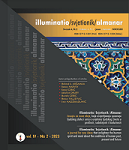
The paper analyzes the relationship between Occidental-Westernized understanding of art and a possible status of art within an integrated discourse – al-thawābit al-islāmiyyah, as well as the aesthetic-metaphysical experience of the traditional Islamic systematization of knowledge – ṣināʿat al-kitābah, and the action of making a visual form beautiful – ṣināʿat al-taṣwīr. Particular attention attention is attached to the concept of qadar/ṣināʿat, where it is possible to distinguish between homo islamicus’s ornamental activity of recognitive type and the cognitive productive-reflective representation of collaborative disposition. Due to the simultaneous existence of unity and difference within the aestheticized activity/ṣināʿat of recognitive type (ornamental form) – al-ṣināʿat al-zukhrufiyyah, the paper strives to show that the traditional systematization of knowledge provides the most complete expression to the aesthetic meaning of the unity-difference dialectic, which is in turn manifested in the qadar/ṣināʿat discourse under the umbrella of ṣināʿat al-taḥsīn – the issue of the modalities of discourse in the context of pictorial activity/ṣināʿat rather than fann al-taḥsīn. Still, a particular emphasis is placed on the parallel existence of a kind of informative initiation of applied form – al-ṣināʿat al-taṭbīqiyah aimed at achieving a distinctive content-related goal of aestheticized activity/ṣināʿat of homo islamicus, where he is not involved in imitation or figural representation with a special importance of the pure figural phantasm (miniature visual representation/books of Arabic and Persian manuscript). The paper also analyzes and substantiates meanings of the Arabic word al-fann, and raises the question as to why the word al-fann has been selected to refer to the phenomenon of art in modern Arabic, rather than the word al-ṣināʿah (skill, practical knowledge). To articulate the answer, the paper studies the words in Arabic lexicographic, non-lexical, i.e. semantic tradition, and substantiates and defines the reason for the established use of the word al-ṣināʿah within qadar/ṣināʿat, i.e. the science of the pictorial – ʿilm al-taṣāwīr.
More...
This article analyses the biography of Bajram Murati (1930-2013), an Albanian refugee to New Zealand, and the contentions over symbolic spaces and meaning within the New Zealand Muslim community over the 1960s, 1970s and 1980s. At the centre of the analysis stand the ongoing negotiations between Murati, as director-general of the New Zealand Council of the World Muslim Congress, and other Muslim community representatives over leadership. Such an examination reveals much about the wider immigrant experience and the nuanced evolution of Islam inside a secular society of Anglo-European Christian heritage. The author contextualizes the cultural and social setting of his life, highlighting both his commercial interests outside the religious organisations and his extensive discussions on faith issues. As should become obvious, the notion of a simple Albanian-Muslim rivalry with Asian-immigrants does not suffice to explain in depth the complex mechanisms at work. Altogether intra-Muslim communal competition, the reshaping of Islamic identities and solidarities across the country, and variegated political discourse have generated differences and loyalties that go well beyond one-dimensional ethnic conditionalities.
More...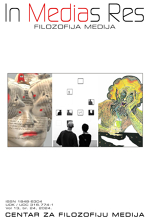
From the eighth century, Muslims developed not only their knowledge in the field of theology, but also astronomy, mathematics, chemistry, medicine and other sciences. It is in the nature of Islam to encourage understanding and knowledge, research and study of nature. The text wants to show that the foundations of the Islamic scientific tradition existed even before the introduction of the Greek tradition, that is, that the golden age of Islamic science began with Abdel al-Malik, a century and a half before the creation of Bayt al-Hikma in Baghdad in the 9th century. For almost an entire millennium, the scientists of the Islamic civilization not only studied and analyzed the Greek (and other) sciences, but also added to them many completely new concepts that were unknown to their predecessors. The Crusades and the Mongol invasion influenced the circumstances in which Islamic science developed. The slow introduction of printing technology contributed to the slowdown of scientific development, as did the cessation of the use of the Arabic language as a scientific lingua francae. It is important to point out that Europe in the 12th century paid great attention to Islamic works on astronomy, arithmetic, trigonometry, optics, geometry, astrology and medicine (Mushtaq 1990). The proposed narrative therefore tells us that the science that began with the Greeks came to the Arabs and Muslims where it was accepted, assimilated and rearranged. It was then transferred to Europe over the centuries, where it ultimately contributed significantly to the industrial revolution.
More...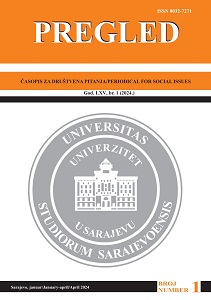
The session of the "All-Bosniac Assembly", in September 1993, belongs to the series of historical events with a double interpretation form. Except as a culminating act of national self-awareness, this event is also titled as Bosniak sympathy in the negotiation process, which really changes the historical face of Bosnia and Herzegovina. Unknown facts are that the assembly process started with the idea of a "All-Bosnian Assembly", within the Assembly of the Republic of Bosnia and Herzegovina, and abruptly ended in a one-party, and with it, single-national form. Documents and original testimonies show that the change in the name, organizer and topic of the Bosnian assembly was caused by the abrupt negotiation agreements on the tripartite Bosnia and Herzegovina, agreed at the beginning of September 1993. The planned assembly, on the position and future of the war-torn ZAVNOBiH state, came down to a Bosniak plenum on their own future in the new Bosnia and Herzegovina. The main topic of the "All-Bosniac Assembly" was related to the state-territorial reorganization of Bosnia and Herzegovina, whereby the denomination of Bosnian Muslims into Bosniaks appeared as a negotiation precondition. The organizers of the "All-Bosniac Assembly" raise the question of the benefits and harms of "further emphasizing Bosniakness", while one of the key actors of this session claims that by insisting on Bosnian Muslimness "we are causing suspicion in Europe". According to this context, Bosniakness, as a historical category of Bosnian nationality, appears at the "All-Bosniac Assembly" as a political tool in the service of the negotiation process. The national emancipation of Bosnian Muslims into Bosniaks is revealed as a consequence of international negotiation pressure, on the one hand, or as a result of the reduction of state politics to ethnic politics, on the other.
More...
The article discusses the functioning of Muslim schools in the Simbirsk — Ulyanovsk Volga Region of the 1920s and 1930s. The article was prepared on the analysis of documents of the State Archive of the Ulyanovsk Region and the State Archive of the Recent History of the Ulyanovsk Region. The article has a general overview of the implementation of the Soviet state’s policy towards Muslim religious schools. The actual material analyzes the practice of applying the Decree on the separation of church from school of January 23, 1918, and the resolution of the Presidium of the All-Russian Central Executive Committee of the RSFSR of June 9, 1924 on the permission of religious education in mosques. In the Simbirsk — Ulyanovsk Volga Region, the campaign to liquidate Muslim religious schools began in the first half of 1923. The Soviet state wanted to liquidate Muslim religious schools and implement Soviet schools. Muslim Tatars of the Simbirsk-Ulyanovsk Volga Region have repeatedly filed petitions for the organization of religious education for children at mosques. In the 1920s, in the region at the same time there were a few legally open schools and there were various underground forms of religious education for Tatar children. The process of liquidating religious schools ended at the turn of the 1920s and 1930s. The latest applications for the organization of religious training from the Muslim Tatars of the Simbirsk — Ulyanovsk Volga Region were received at the same time.
More...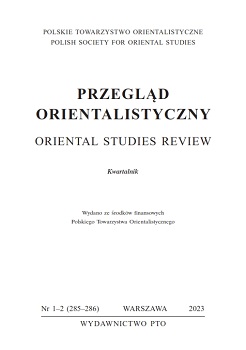
The issues of combatting terrorism and extremism are considered to be the most acute problems in the national security of many countries. Terrorism has never been seen in Kazakhstan as a real threat, but more as a potential danger. However, after the terrorist attacks that took place on the territory of Kazakhstan, the threat of terrorism has become a reality. Moreover, a number of citizens of Kazakhstan left the country in order to join the “holy war” mainly in Syria and Iraq, and contribute to the building of the “Islamic Caliphate.” In order to evacuate the Kazakh citizens left in dangerous terrorist zones, the National Security of the Republic of Kazakhstan conducted a large-scale humanitarian operation “Zhusan” returning 607 citizens (413 of them are children) from ISIS (Islamic State of Iraq and Syria). In this article, various factors and motives of women who were under the influence of terrorist ideology and who emigrated to ISIS in order to become “true” Muslims are revealed based on the research works of Kazakh and foreign scholars and researchers as well as interviews of the women themselves and experts who worked with them.
More...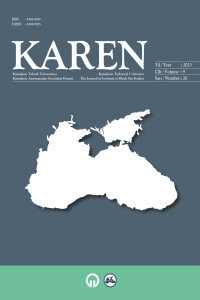
Rize, which has an important place in Anatolia with its geographical structure, culture and vernacular art understanding, became an Ottoman territory after 1461. Religious, civil and educational structures built in the region were shaped by the hands of local masters which showed a characteristic feature. Potamya Mosque and Madrasah (Muslim theological school) built in Güneysu (Potamya) District is one of them. According to researches, the mosque and madrasah built in 1798 became unusable over time. By 1907, it was thought that the mosque and the madrasah sould be rebuilt. However, the donations proved insufficient for the work, which was planned to be made with the help of the public, and help was requested from the sultan of the period, Sultan Abdulhamid Han. As a result, the survey book containing the names of the Treasury Minister Ohannes and Lazistan Sanjak Engineer Ferid, and the plans and drawings of the structures, was prepared and dispatched. In this survey book containing sixteen documents, it was determined that 184,344 kuruş (pennies) was required for the mosque, madrasah and their annexes. However, the mosque and the madrasah, of which plans and drawings are given in the document, could not be built because the aid was not sent. For this reason, Hamidiye Mosque Kebir and Madrasah, together with its drawings and images, has been recorded as an unfinished masterpiece of Rize. It is obvious that the mosque and madrasah to be built were planned differently from the Ottoman period works in Rize. The exterior architectural design and minaret design of the mosque and the U-plan scheme of the madrasah are similar to the capital style. When evaluated within the local architecture and established art of the region, the plans and schemes prepared for the monuments, even though they were not built, show that the building architects and artists had knowledge of the works of the capital and made efforts to follow the style of the capital. With this study, which is centered on this important situation, it is tried to underline the continuity of Ottoman art in a provincial city like Rize, which is far from the capital city, and the followup of the "local" to the "national". In addition to this information obtained by translating the relevant documents, the translation of the "Keşf-i Evvel" book prepared to be sent to the state regarding the works planned to be built during the period is also included in the article as an example for the reader.
More...